Table of Contents
● Introduction
● Treadmills Market Insights
● Key Considerations for Selection
● Conclusion
Introduction
The treadmill market in 2024 presents a plethora of opportunities for retailers and industry professionals. This landscape is shaped not only by the treadmills themselves but also by significant shifts in consumer preferences, technological advancements, and market dynamics. Understanding these changes is crucial for staying competitive and meeting the evolving demands of fitness enthusiasts. This guide provides a deep dive into market trends, essential selection criteria, and a curated selection of the year’s top models, equipping industry buyers with the knowledge and insights needed to successfully navigate the 2024 treadmill scene.
Treadmills Market Insights
The global treadmill market size was valued at USD 3,797 million in 2021 and is projected to reach USD 5,946 million by 2030, growing at a Compound Annual Growth Rate (CAGR) of 5.11% during the forecast period (2022-2030). The home treadmill market, a subset of the global treadmill market, was estimated to be worth USD 3423.7 million in 2021. This growth is driven by the increasing awareness of health and fitness, technological advancements in treadmill components, and the influence of social media platforms where fitness enthusiasts showcase their workouts. The market is described as highly competitive with several key players dominating the industry. Some of the key players in the global home treadmill market include ICON, Lifefitness, Technogym, and Precor.
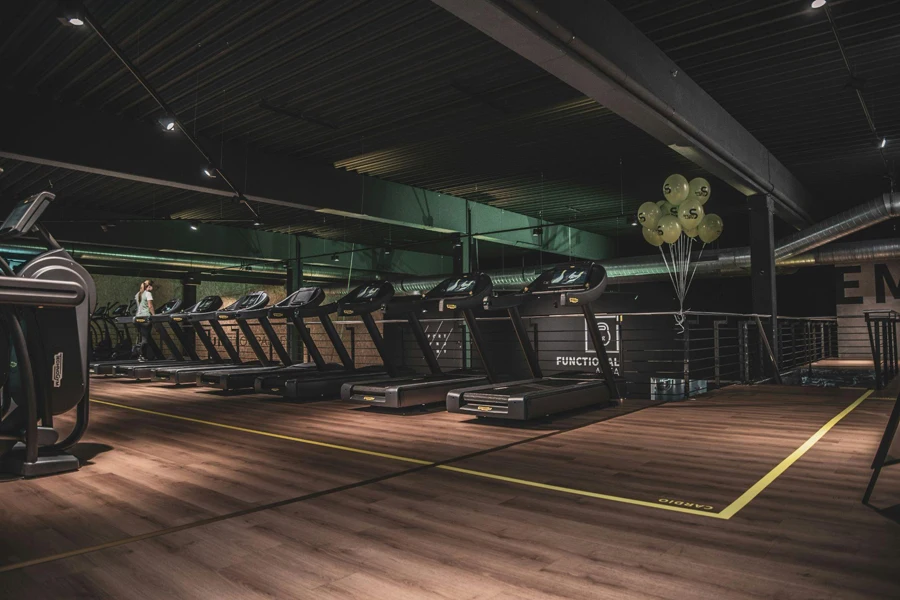
Key Considerations for Selection
When selecting a treadmill, it’s important to consider the user’s fitness goals, the available space for the equipment, and the specific features of the treadmill.
Fitness Goals
For Intense Running and Cardio Training:
When selecting treadmills for intense running and cardio training, it’s crucial to focus on models with a powerful motor. These treadmills can sustain high speeds consistently without overheating, making them ideal for rigorous workouts. A sturdy frame is another key feature, as it provides the necessary stability and durability to withstand the impact of intense running. For those with a longer stride or taller stature, a treadmill with an ample running surface is essential, offering enough room for a comfortable and unrestricted running experience. The inclusion of incline and decline features adds significant versatility to workouts, allowing users to simulate various outdoor running conditions and further enhance their cardio training. Lastly, a high speed and incline capacity are indispensable for advanced training, enabling users to challenge themselves and push their limits in both speed and endurance.
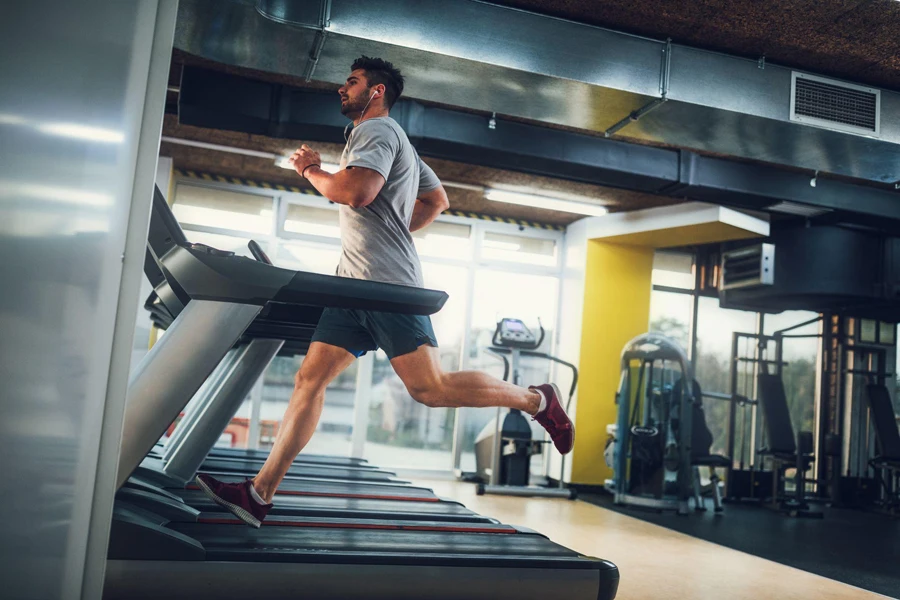
For Weight Loss and Moderate Cardio:
For individuals focusing on weight loss and moderate cardio, treadmills with customizable workout programs are highly beneficial. These programs, which vary in intensity and duration, can optimize calorie burn and aid significantly in weight loss efforts. Heart rate monitoring is a useful feature for maintaining the desired intensity level, ensuring effective fat burning during workouts. Treadmills with moderate motor power are typically sufficient for these goals, perfectly accommodating brisk walking or light jogging. Additionally, comfortable deck cushioning plays a crucial role in reducing the impact on joints, thereby making longer workout sessions more comfortable and sustainable.
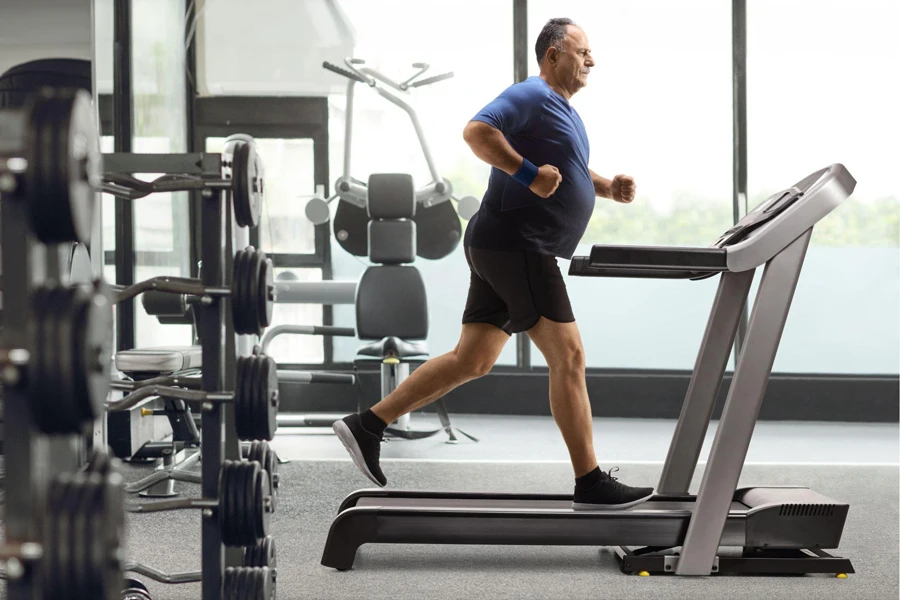
For Walking and Light Jogging:
For walking and light jogging, treadmills with basic functionality and less powerful specifications are often adequate. These models are ideal for users who do not require high-intensity workouts but still seek the benefits of regular exercise. Space-saving design is a significant consideration, with compact or foldable treadmills being ideal for users who have limited space at home or in the office. Ease of use is also a priority, with simple interfaces and straightforward controls being preferable for users who are focusing on basic fitness or rehabilitation.

For Muscle Toning and General Health Improvement:
Treadmills that offer variable incline options are excellent for muscle toning and general health improvement. These features help in targeting different muscle groups, particularly in the lower body, thereby enhancing muscle tone. A diverse range of pre-set programs on the treadmill can assist in maintaining a balanced and comprehensive fitness routine, catering to various fitness levels and goals. Steady and consistent performance is crucial for these treadmills, as it ensures a reliable workout experience. This consistency is particularly important for users focused on gradual health improvement and muscle conditioning, as it allows for steady progression and the safe achievement of fitness goals.

Space Considerations
When advising retailers on the selection and placement of treadmills in their inventory, it’s crucial to emphasize not just the dimensions of the treadmills themselves but also the additional space required for safe and efficient operation. This guidance is vital for ensuring that customers are fully informed about the space requirements for treadmill installation, which can significantly impact customer satisfaction and safety.
Side Clearance Considerations
Retailers should inform their customers that each treadmill requires a minimum of 19.7 inches of clearance on either side. This specification is not just a safety measure; it’s a crucial aspect of treadmill usability and accessibility. Adequate side clearance ensures that users can easily access the treadmill, which is particularly important in settings where space is at a premium, such as home gyms or compact fitness centers. Furthermore, this clearance is essential for safe mounting and dismounting, especially in commercial environments where users might be less familiar with the equipment. It also provides necessary space for emergency situations, allowing for a quick and safe exit from the treadmill if needed.
Rear Clearance Requirements
A key point for retailers to communicate is the necessity of maintaining at least 39 inches of clearance behind the treadmill. This space is vital for several reasons:
- Safety During Dismounting: After intense workouts, users may experience disorientation or dizziness. The additional rear clearance provides a buffer zone, reducing the risk of falls or trips during this vulnerable transition period.
- Accident Prevention: In the event of a stumble or fall, the extra space at the rear of the treadmill can prevent users from hitting walls or other equipment, thereby minimizing the risk of injury.
- Emergency Accessibility: This clearance is also crucial for allowing quick access in emergency situations, a factor that is particularly important in commercial settings where a rapid response is essential.
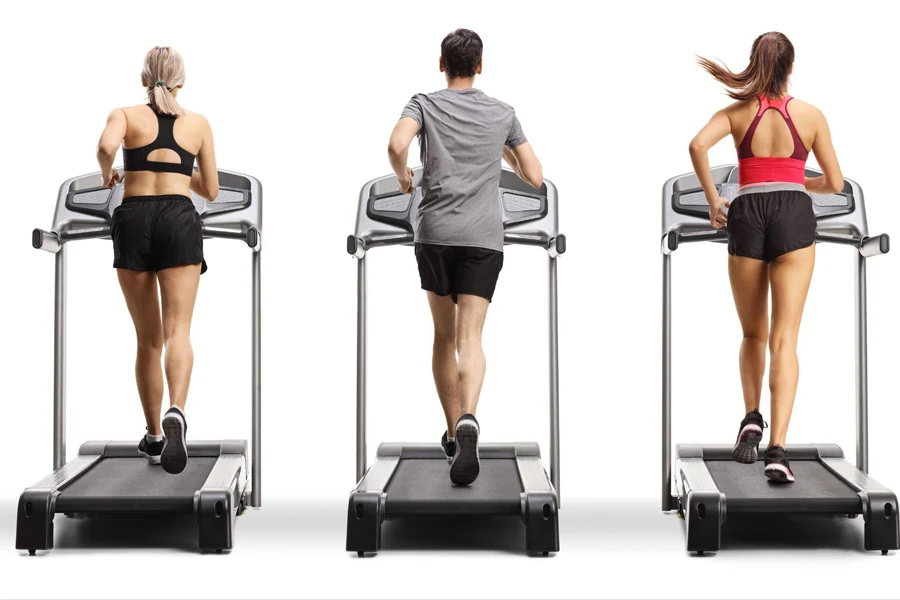
Treadmill Features
Motor Power
- Specifications: Treadmill motors are measured in terms of horsepower (HP) or continuous horsepower (CHP), with CHP being the more reliable indicator of motor power. Most home treadmill motors range between 2.25 and 4.25 CHP.
- Guidance for Usage:
- For walking: 2.0 CHP or higher is recommended.
- For jogging: At least 2.5 CHP.
- For running: 3.0 CHP or more.
- For frequent, fast running: 4.0 CHP or higher.
- Over 200 pounds: Add an extra 0.5 CHP to these recommendations.
Running Surface Size
The industry standard for treadmill track lengths caters to different types of users. For those who primarily walk, a track length of 55 inches is standard, providing ample space for a comfortable stride. For running treadmills, the track length increases to 58 or 60 inches, accommodating the longer strides of runners. Some high-end treadmills designed for serious runners even extend the track length to 63 inches, offering extra space for an unrestricted running experience.
The width of the treadmill track is another important consideration. The standard width is 20 inches, which is adequate for most users. However, for larger individuals or those who engage in incline training, extra-wide tracks measuring 22 inches are available. These wider tracks provide additional space for a more comfortable and secure footing, especially when the treadmill is used at an incline.
Cushioning
Cushioning is a critical feature in treadmills, designed to reduce the impact on joints during exercise. Compared to running on roads, a cushioned treadmill can reduce the impact by approximately 15-40%. This reduction in impact is crucial for preventing joint pain and injuries, making treadmill running a safer and more comfortable option for people of all fitness levels.
Some treadmills go a step further by offering adjustable cushioning. This feature allows users to customize the level of support to suit their personal preference or to mimic outdoor running conditions. Adjustable cushioning is particularly beneficial for those who alternate between indoor and outdoor training, as it helps in maintaining consistency in running surfaces.
Incline/Decline Range
The incline feature in treadmills introduces variability in workouts, making them more challenging and engaging. The typical incline range on most treadmills varies between 10 and 15 percent, allowing users to simulate uphill running and engage different muscle groups. This feature is excellent for enhancing cardiovascular workouts and increasing calorie burn.
In addition to incline, some treadmills also offer a decline feature. This unique addition allows users to simulate downhill running, adding another dimension to the workout. The decline feature is particularly useful for training for outdoor runs that involve varied terrains, providing a more comprehensive training experience.
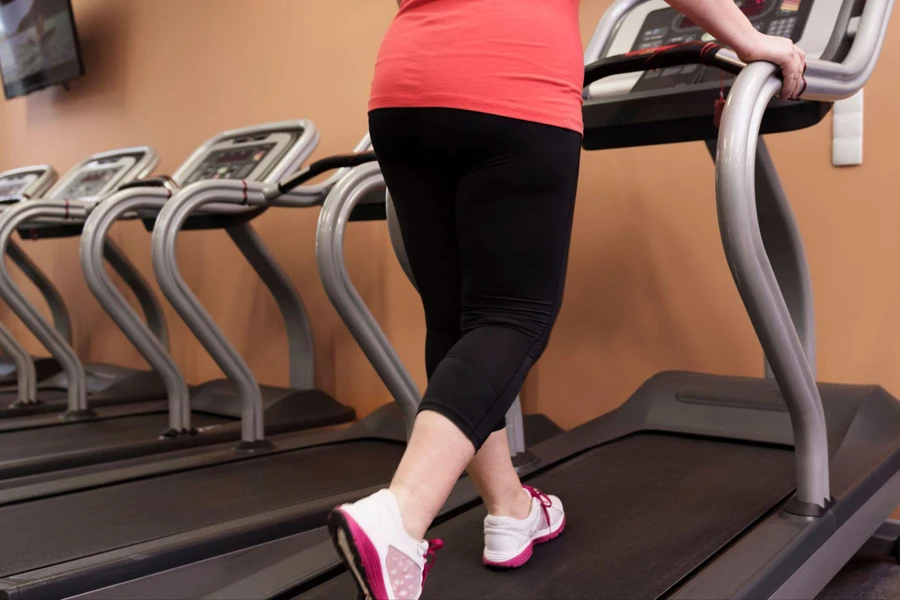
Maximum Speed
The maximum speed of treadmills caters to a wide range of fitness levels. Most treadmills offer top speeds between 10 and 12 mph, accommodating everyone from casual walkers to serious runners. Some advanced models are capable of exceeding this range, catering to high-performance athletes or those looking to push their limits in speed training.
Additional Features
- Heart Rate Monitoring: This feature is vital for monitoring workout intensity and is particularly beneficial for those following heart-rate-based training programs.
- Built-in Workout Programs: These programs provide structured workouts, which can be a significant selling point for users looking for guidance and variety in their exercise routine.
- Compatibility with Fitness Apps: Connectivity with fitness apps allows users to track their progress, join virtual classes, and enjoy a more interactive workout experience.

Conclusion
The dynamic treadmill market of 2024 offers a wide range of options to cater to diverse user needs and preferences. As retailers and industry professionals, understanding these options and the factors that influence treadmill selection is crucial for meeting customer demands and staying competitive in the market. As we move forward, this strategic understanding will be instrumental in navigating the ever-evolving fitness equipment industry.








